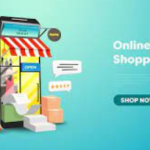
What is the first thing that comes to your mind when you hear quality content? When I hear this phrase, the first thing that comes to mind is something informative and interesting, especially the content that can make a deep impression on the mind of the readers, viewers or listeners. The medium can be anything. You will not need to get worked up about your reach and popularity if the content is vital. It will, anyway, make its path to your audience’s heart.
As a student, you must have surfed various assignment help websites before hiring one. Which one did you settle for? I am sure the content of the websites has acted as a significant decision-making parameter. Likewise, if you are building a website or writing or developing content for one, you must keep a keen eye on the excellence and details.
Visual representations, success stories, and blog articles with the widespread appeal are all acceptable website content types. However, each item should be produced by a unified approach: your content creation strategy.
Content development stages, from research and planning through marketing, optimisation, and progress tracking, are included in a high-quality content development plan. It builds the groundwork for trust and ensures that every buyer’s experience with your firm is impactful.
This article will explain why a structured content creation process is essential for your rapid evolution and assist you in creating and putting one into practice.
Table of Contents
What do you mean by quality content?
This is a fundamental question. Before starting to write or develop high-quality content, you need to understand what is high-quality content and its use.
High-quality content can increase traffic, decrease bounce rates, and increase conversions. But what is the deciding factor? Who decides whether your content is good enough or not? Let me answer that for you. It is your users. But this also makes articulating on-point content more daunting. Why? Because each user is unique and has a unique search intent. However, they do share one thing in common. Every user is aware of their desires. All you have to do is discover your potential users’ desires or interests.
Steps to Develop High-Quality Content
You can take several steps to create sound structures and thoughtful, legible, attractive and appealing content. In other words, your users and search engines can accept content as being of a high calibre. Yes, it will take time to comprehend the way and master this. But you can be sure that this time you will spend on mastering this skill will act as your investment for a successful future for your website.
- Create Content for Your Users
What are you selling? Service or product, or do you want to share stories? Whatever your objective is, you want people to know about them. So even though you feel it is your story and must tell it your way, the actual scenario is a bit different. As your users are the most eminent factor, you must create what they want to know, read, watch or hear.
If you blog, you want your readers to learn more about you and the subjects that you find interesting by the way they prefer reading. Hence it is also crucial to examine
- What topics your readers are genuinely interested in reading.
- What hobbies do they enjoy?
- What news or events do they monitor that are relevant to your industry?
- What problems are they attempting to solve by coming to your site?
The best way to find answers to these questions is to undertake appropriate keyword research. This will help you to find the keywords your potential users are searching the most of talking about. In this way, you can easily choose in-demand topics to write about and the language in which your audience will easily comprehend your message. As the count of visitors to your website increases and the bounce rates decreases, the search engine will recognise your site as a proper result to present in their SERPs. This is how keyword research benefits your rankings.
- Crisp and Compact Content
Make your content simple to read if you want readers to read your blog post or page till the end and understand what you are trying to say properly. It entails considering the organisation of your material and the language you employ. For instance, use headings and paragraphs because chunks of text make the readers repulsive.
Make the reading experience of your audience simpler by including short and easy-to-understand words, phrases and sentences. Avoid using repetitive words. Instead, use synonyms.
Furthermore, remember to enjoy yourself while writing! Keep your true self active while creating the content, and be honest with the message you are conveying. This enables consumers to get to know you and your company better and creates a trustworthy impression on your viewers.
- Set an Aim
Your content should be relevant to your website’s values and aim to avoid using meaningless platitudes. There should always be a purpose for each and every claim you make. Set a goal for your content. You can ask yourself the following queries to clarify what to write and how to structure and market your content.
- What value does this content add?
- Does my content aim to educate, entertain, inform or solve a problem for the readers?
- Where will this article be published?
- What degree of skill does your intended audience possess?
- What distinguishes this content from its rivals?
Tips for setting goals
- Create specific, achievable goals so you can gauge your progress.
- Select unique goals for each piece depending on the data funnel phases, marketing communications, and market traits.
- To ensure that content meets larger business goals, make sure to coordinate your content objectives with your overall marketing strategy.
- Funnel Analysis
The level of brand familiarity and purchase readiness affects how people behave quite differently. Hence, each piece of content is written with a specific funnel stage in addition to a goal.
Hence, a commercial Call To Action (CTA) on a blog post with an instructional Top of the Funnel (TOFU) functions the same as a CTA on a product landing page with a Bottom of the Funnel (BOFU) approach. The formats that are effective for each stage also vary. For instance, in-depth “how-to” manuals can increase traffic, while videos can increase engagement.
Tips for funnel analysis:
- Make sure all phases of the buyer’s journey are covered by segmenting or planning your content according to funnel stages.
- Look for gaps in content performance and implement continual monitoring to ensure that it does not change over time.
- To determine the ideal candidate for each level, conduct A/B tests.
- Create conversion routes for user acquisition; pick out your advertising channels to prevent sending brand-new customers to a page with a call to action (CTA).
- Updated Content
Make sure your content is current and relevant. It is an essential component of high-quality content. To ensure that users can locate the appropriate information, you must occasionally update your material. But why is this such a big deal? Because it demonstrates to your users that you keep up with current affairs and can always give them accurate information.
In other words, it increases audience loyalty and fosters a sense of trust. In addition, maintaining your website and blog entries informs Google that your site is “alive” and relevant, which is vital for SEO. Therefore, block off time in your calendar to update your content consistently.
Author’s Bio: Revan Jonas is a professor who has done his PhD in Digital Marketing from the University Of Sydney, Australia. He has also been associated with EssayAssignmenthelp.com for the last seven years, where he offers assignment writer to students.


















